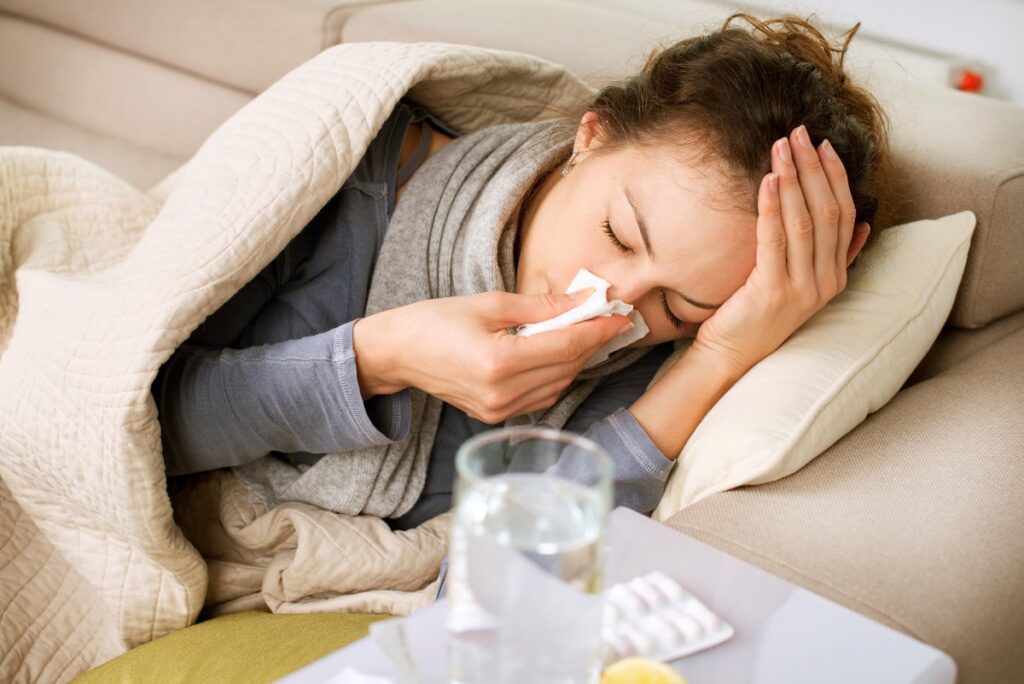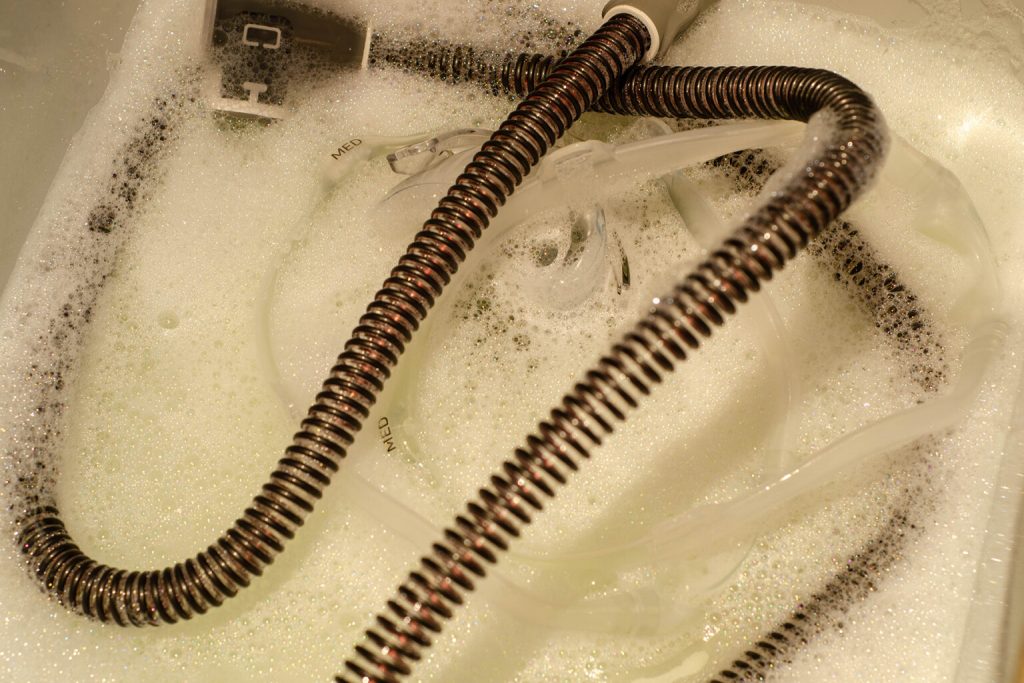Last Updated on August 24, 2021
Have you noticed that most media including the internet and radio keep broadcasting content that promotes the use of high-tech cleaners for CPAP(Continuous positive airwave pressure) machines in sleep apnea treatment? Well, the truth is: Mold and bacteria can gather in different parts of a CPAP machine.
According to some ads, all you need to do is touch a simple button, and all those organisms lurking somewhere in the CPAP pump, mask, or tube will burst into non-existence! Yeah, they say that your CPAP will now be sanitized and made ready for use while you’re in bed sleeping. Is this true? Even if this is so, some wonder whether cleaning a CPAP machine requires space-age technology; does it?
Why don’t we find out?
How to Deal With Mold and Fungal Risks While Using a CPAP?
Note that the CPAP is designed with some “creature features” to make them pleasurable and comfortable to use. Indeed, the heated tubing and heated humidifier usually make the air warmer and moist, decreasing nose and mouth dryness.
Such decreased dryness may have the effect of reducing potential infection risk. Moreover, it improves the user’s tolerance to CPAP therapy. Further, the use of CPAP often improves inflammation along the airway. Also, remember that certain organisms thrive in a warm, humid environment.
Organisms like yeast, mold, and fungus are among these. In fact, some dangerous molds tend to establish themselves in the CPAP equipment, taking advantage of the situation. Note that such organisms are potentially harmful to CPAP users.
This can lead to lung and airways irritation, contribute to cough, and cause dangerous infections, including bronchitis, inflammation of the lungs (pneumonitis), and pneumonia. In some cases, these organisms may be blown directly into your lungs what a scary thought!
Do Not Keep Your CPAP in a Moist Environment
Keep this in mind unless your CPAP is kept clean, allowing excess moisture to sit in the humidifier or tubing, you’re at risk of developing a yeast or fungal infection. Fortunately, studies carried out on such occurrences are still inconclusive, suggesting that such cases are rare. It seems that the risk is very low. To reduce the risk further, you should use a humidifier and maintain good hygiene.
Remember this: leaving water in the CPAP device for a long time can lead to mold formation. Thus, never store your CPAP device with some water left inside. Also, avoid putting the device in an undesirable environment (like leaving your CPAP in a garage or shed for months or years before using it again).
Take Action to Avoid Infection
Victims of sleep apnea often worry about the possibility of the CPAP machine causing infections. In reality, using CPAP comes with a reasonable risk of developing infections. Such dangers may include pneumonia and sinus infections.
It’s quite possible to drastically reduce your chances of getting sick while using this device. How? Regularly clean your device using the proper steps; use filters, heated tubing, and distilled water to achieve success.
When the equipment is new, the CPAP is generally sterile; hence the metal parts and the plastic cannot cause illness- there are practically no germs. After use, the situation changes due to the accumulation of germs.
There have also been a few reported cases of ulceration and eye irritation due to CPAP use. Interestingly, research suggests that using a CPAP mask can reduce the risk of infection and inflammation of the nasal passage.
Follow This Step-By-Step Procedure
You can take the following action to avoid infection:
- Regularly clean your mask with dish soap and hot water. Do so daily or weekly if possible (depending on your situation). You don’t have to use expensive things like costly CPAP sanitizer equipment.
- If you’re sick with flu or the common cold, clean the mask, tubing, and the entire equipment to remove undesirable residual emissions. Observance of basic hygiene can help prevent the development of unpleasant smells.
- Regularly remove all water and moisture in the CPAP tank if you don’t use it for several days. Clean the equipment thoroughly and let it dry.
- To reduce condensation, use heated tubing and a humidifier.
- Use the humidifier’s distilled water to keep infection at bay (this is particularly true if you live in regions like Louisiana).
- Replace your machine filters as recommended. Replace your mask every 3 months. Change the mask cushions and filters every 2 weeks or after a month.
- Never share your CPAP with others or purchase used equipment (like tubing and masks).
Is a CPAP Sanitizer Really Necessary?
Some have asked the pertinent question: Is it really necessary to use a CPAP sanitizer to clean the device? Essentially, you can use two types of sanitizing equipment on the market; simply put the CPAP parts in a machine, hit the button, and let your machine get to work. One of these cleans the CPAP parts using ozone (activated oxygen). The other uses ultraviolet light.
You’ll enjoy a significant advantage in the convenience it affords. But this costs some money. You may have to part with $350 maximum or $250 minimum. In the final analysis, it might not matter whether you go for a costly CPAP cleaning system or decide to use the traditional elbow grease- any investment made to enhance your cleanliness using CPAP equipment will eventually prove to be worth your while.
Final Thoughts
One essential segment of your CPAP maintenance schedule involves simple cleaning. With a range of cleaning choices available, you don’t have to find the task of cleaning such devices exhausting. Merely establish a regular cleaning routine as part of your daily nighttime activity, and you’ll start feeling healthier!
Yes, you’ll be a step nearer to keeping sickness and infections away. Moreover, you’ll enjoy a fantastic experience using your CPAP machine. Hmmm, cleaning your CPAP should not be a difficult task. Ultimately, sticking to such a cleaning schedule will not only lengthen the machine’s life, but willl extend the life of the CPAP machine’s parts as well.
Nice, don’t you think?



